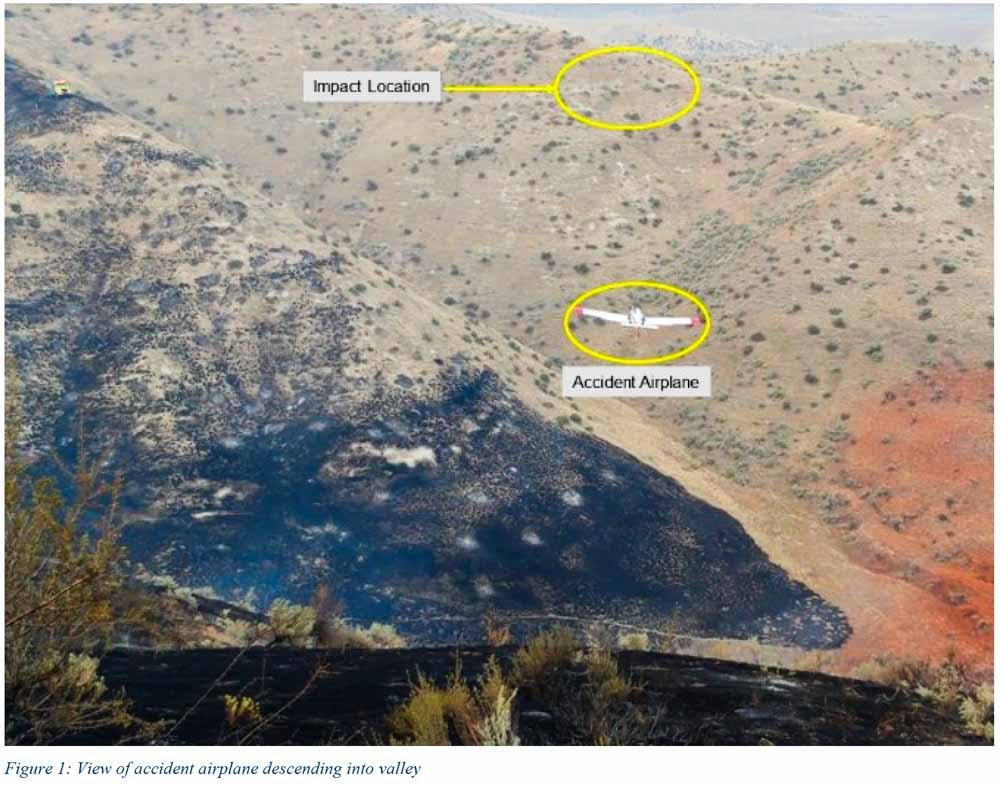October 16, 2020 | 3:56 p.m. MDT

The National Transportation Safety Board has released a preliminary report on the fatal crash of a single engine air tanker (SEAT) in Idaho.
The Air Tractor AT-802A crashed September 22, 2020 while working on the Schill Fire, approximately 2 miles southeast of Emmett.
The pilot, Ricky Fulton, perished. The aircraft, Tanker 857, was owned by Aero S.E.A.T. Incorporated and was on an on-call (CWN) contract with the Bureau of Land Management. The aircraft was first registered July 10, 2020, FAA registration number N836MM.
Typically it takes 8 to 16 months for the NTSB to issue their final, complete report with an analysis of the causes of a crash.
This was the sixth firefighting pilot and the third SEAT pilot to be killed in the United States this year. In addition, three members of the crew of a C-130 from the U.S. died when their air tanker crashed January 23, 2020 while fighting a bushfire in New South Wales, Australia. Also, one person was killed August 8 in the crash of a CL-215 based in Portugal while battling a fire in Spain.
Below is the complete text from the narrative section of the report about the September 22 crash.
On September 22, 2020, about 1830 mountain daylight time, an Air Tractor AT-802A, N836MM, was substantially damaged when it was involved in an accident near Emmett, Idaho. The pilot was fatally injured. The airplane was operated as a Title 14 Code of Federal Regulations Part 91 aerial firefighting flight.
Witness conducting firefighting operations, adjacent the accident site, reported that the accident airplane, a single engine air tanker (SEAT), descended and made an approach similar to the previous SEATs that were dropping fire retardant. The witnesses said the airplane passed over the top of the ridge and descended into the valley, however, the pilot did not drop the fire retardant as previous SEATs did. The witnesses stated he heard a brief application of engine power as the airplane began to ascend over rising terrain at the pilot’s 12’oclock position. The airplane subsequently impacted rising terrain near the peak of the ridgeline.
A video provided by a witness captured the accident sequence. The recording showed the airplane descend over an intermediate ridgeline and into a valley (see figure 1). About 3 seconds later, the airplane momentarily returned to level flight before it pitched to a nose-high attitude. The airplane subsequently impacted rising terrain approximately 80 feet below the ridgeline.
Examination of the accident site by a Federal Aviation Administration inspector revealed that the airplane impacted rising terrain. The wreckage debris path continued from the initial impact point over the top of a ridgeline, and extended into a small ravine. The airplane came to rest approximately 100 yards from the initial impact pointe on a heading of 040 degrees. All major structural components of the airplane were located throughout the wreckage debris path. The wreckage was recovered for further examination.
(end of report)
Thanks and a tip of the hat go out to Matt.
